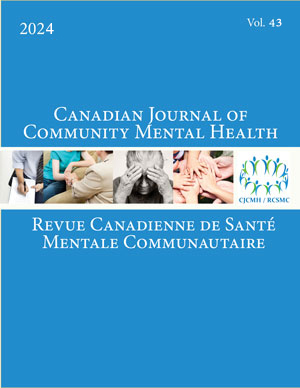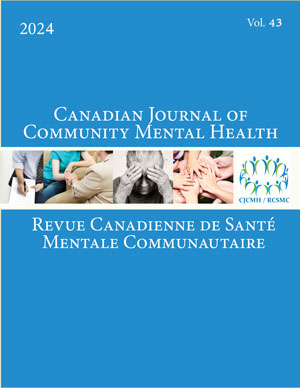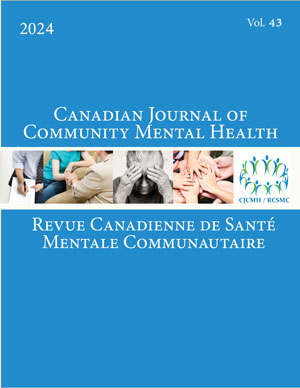Volume 4 • Number 1 • April 1985
OPEN ACCESS
The paper poses a challenge to the medical and legal professions. Our Charter of Rights and Freedoms defines the standard for government intervention in the lives of the citizens of Canada. It has an immediate and significant impact upon involuntary admissions to psychiatric facilities, in as much as those admissions constitute a deprivation of liberty to the individual. The challenge to our professions is one of reviewing present practice in the field, and of reconciling the need for effective administration of health care systems with the protective standards set by the Charter.
OPEN ACCESS
This paper reviews research progress and research priorities in the study of suicidal behaviour as a preliminary to implementing a community-based program of education and prevention of suicidal behaviours. Among the priorities for Canadian research and evaluation which this review has identified are better statistical base for Canadian suicidology; the study of regional and ecological variations in suicidal behaviour in Canada; the role of social stress, unemployment, and social change; family stability and disruption; the role of biological factors, mental illness, and alcoholism; the taxonomy of suicidal behaviours; the social meanings of suicide at the community level; and the increasing rates of suicidal behaviour in young people and associated age cohorts.
OPEN ACCESS
Further to the work of Broverman et al. (1972) and others, this study explored whether different attitudes exist toward female as opposed to male suicidal behaviours, and, in turn, whether these conceptions would vary according to one's professional discipline. Psychologists (N = 38), social workers (N = 45), registered nurses (N = 43), and 42 lay persons completed the Suicide Opinion Questionnaire (Domino et al., 1982). Half of each group's questionnaires referred to a female target person, and half referred to a male. Judged seriousness of behaviour for males vs. females was significantly different on 22 items, and significant differences between professional groups appeared on 36 items. Some female suicide behaviours were perceived as less serious than were the same behaviors when performed by a male. Further analyses, and implications for theory and practice in the community, are outlined.
OPEN ACCESS
Although gains are very recently being made in the area of wife battering due to an increase in publicity regarding the prevalence of this issue, much remains to be done in terms of basic consciousness raising within the human service sector. This article provides an overview of the literature dealing with the problems faced by battered women with particular attention being paid to rural and native battered women. Explanations for the causes and effects of this social problem are discussed. The primary objective of the paper is to highlight the current inadequate response of human service agencies to this long standing problem. Recommendations offered focus on program and policy issues for the human service network that comes in contact with cases of wife abuse.
OPEN ACCESS
This study used a waiting-list control design to investigate the hypothesis that receiving service from Big Brothers/Big Sisters enhances a single mother's social adjustment and general well-being. Mothers who had children matched with a big brother or big sister were compared with mothers who were awaiting service. Mothers receiving service were significantly better on both dependent measures. Interview data supported Gottlieb's (1983) contention that family and friends are more important sources of social support than are professionals.
OPEN ACCESS
This article presents the preparation and implementation of a systematic intervention with sixteen families, each of which had a member hospitalized in a long-term care setting. A guide based on the systemic approach was developed. As well as the steps to be followed, the guide offers the operational reference points which are required for intervention at the process level. The content analysis of the various nurse-family-hospitalized member encounters revealed that confusion, revolt and aggressivity of the hospitalized member were behaviors with which the family had difficulty coping. Particularly in a situation where an elderly woman had to face the disorientation and the aphasia of her hospitalized spouse, infantilisation and overprotection were observed. Moreover, such women experienced a high level of loneliness, had great difficulty in reorganizing their activities of daily living and reported important health problems. The main features of the intervention are discussed; among them are the necessity to help individuals to express their perceptions and their feelings in relation to the situation experienced and the importance of acting as a role model in order to help the family and the ill member toward a more functional form of communication.
OPEN ACCESS
The number of victims of child sexual abuse in a community with a population of 16,000 was studied, Because of the active work of a self-help group in promoting treatment of victims and prosecution of offenders, the courts have convicted 32 offenders in this community during a three year period (1980-1983). Victims were identified in various ways. The sentencing of the offenders was based on specific charges involving 56 victims. Another 29 victims were identified in court but were not included in the final sentencing, as a result of plea-bargaining and other legal procedures. Counsellors in the self-help group were aware of another 33 victims who claimed to have been sexually abused by these same 32 convicted offenders but whose names were not identified in court. While courtroom convictions reflect only the tip of the iceberg, they do give a picture of the minimum number of victims of child sexual abuse in a small community.
OPEN ACCESS
Four years ago, the Community Psychology Class at Dalhousie began working to establish a sexual assault service in Halifax. At that time no service existed in the community. Today, the Service for Sexual Assault Victims in Halifax is funded jointly by the municipalities and the Provincial Department of Social Services, and will soon start its third year of direct service. It is now run by an independent community board, including representatives from the police, legal, social service and medical professions. The theory and practice of the Service is based on an explicit community intervention strategy that combines a psychological account of the experience of sexual assault with the principles of crisis intervention.
OPEN ACCESS
The adequate relation or fit between a person and his/her environment contributes to maintaining and developing mental health. This paper addresses the user's competency in dealing with the physical environment in order to maximize person-environment fit. Environmental competency comprises an understanding of the psycho-environmental potential that is, the capacity of a setting to produce person-environment fits or misfits. The psycho-environmental potential is defined in respect to the six basic functions of a setting. Environmental competency manifests itself finally through an action on environment. In an organizational setting, psycho-environmental intervention should be based on an evaluation in order to maximize its effectiveness.










